Understanding the Properties of Clays Used in Ceramics
When it comes to ceramics, understanding the properties of clays is like having the key to a treasure chest of creativity. Each type of clay has its own unique characteristics that can dramatically influence the outcome of your artistic endeavors. Whether you’re crafting a delicate porcelain vase or a robust stoneware mug, the clay you choose will determine not only the aesthetics but also the functionality of your work. From the way it feels in your hands to how it reacts during firing, every property plays a crucial role in the final product.
Clays are primarily classified into three main types: earthenware, stoneware, and porcelain. Each type has distinct properties that cater to specific needs in the world of ceramics. For instance, earthenware is known for its low firing temperature and porous nature, making it suitable for decorative pieces. On the other hand, stoneware is more durable due to its higher firing temperature, which makes it perfect for functional items like dishes and mugs. Porcelain, often considered the elite of clays, boasts a fine texture and translucence that elevates it to the realm of luxury ceramics.
Understanding these types is essential for anyone venturing into the world of ceramics. Each clay type requires specific techniques and firing processes to achieve the best results. For example, if you were to use earthenware for a purpose that requires durability, you might find yourself disappointed when your piece chips or cracks. Thus, knowing what each clay can offer is the first step in ensuring your ceramic creations are both beautiful and functional.
As we delve deeper into the types of clays, it’s fascinating to note how their mineral composition and texture contribute to their overall properties. For instance, earthenware is typically rich in iron oxide, giving it a warm, reddish hue. Stoneware, on the other hand, often contains a higher percentage of feldspar, which helps it achieve a stone-like quality when fired. Porcelain is primarily made from kaolin, a fine white clay that, when fired, becomes exceptionally hard and vitreous.
But it doesn’t stop there! The physical properties of clay, such as texture, plasticity, and shrinkage, are equally important in shaping and forming ceramic pieces. Understanding these properties can enhance your skills and help you select the right materials for your projects. For example, the plasticity of clay is vital for successful shaping. It refers to the clay's ability to be molded and shaped without cracking, which is essential for creating intricate designs.
Plasticity is a fascinating property that allows clay to be easily manipulated. Imagine trying to shape a lump of dough into a perfect bread loaf. If the dough is too dry, it will crack; if it’s too wet, it will be unmanageable. The same principle applies to clay. Understanding the factors that affect plasticity, such as water content and mineral composition, is crucial for potters. For instance, a clay body with higher plasticity is ideal for throwing on a potter's wheel, while stiffer clays might be better suited for hand-building techniques.
Several factors influence the plasticity of clay. These include:
- Water Content: The amount of water mixed with the clay can significantly affect its workability.
- Mineral Composition: Different minerals contribute to varying levels of plasticity.
- Particle Size: Finer particles generally enhance plasticity.
To ensure that you’re working with the right clay, various methods can be employed to test plasticity. One popular technique is the wedge test, where a piece of clay is wedged and manipulated to assess its ability to hold shape without cracking. This simple test can be a game-changer, helping artists select the right material for their projects.
Shrinkage is another critical factor to consider when working with clay. This occurs during the drying and firing processes, and understanding the shrinkage rate is essential for potters to design pieces that maintain their intended dimensions. Just imagine crafting a beautiful bowl, only to find it shrunk to half its size after firing! Knowing the shrinkage characteristics of your clay can save you from such disappointments.
The chemical makeup of clay not only affects its firing temperature but also influences its color and durability. This makes it crucial for potters to understand these aspects before embarking on their ceramic journey. Different minerals found in clay, such as kaolinite or illite, can significantly impact the final appearance and strength of ceramic products.
The mineral content in clay plays a pivotal role in determining its characteristics. For example, kaolinite contributes to the fine texture of porcelain, while illite can enhance the plasticity of earthenware. Understanding these minerals can help potters choose the right clay for their specific needs, ensuring that their creations stand the test of time.
Finally, the firing temperature is a crucial factor that determines the clay's vitrification process. This process impacts the clay's hardness and functionality in various applications. For instance, lower firing temperatures are typically used for earthenware, while stoneware and porcelain require higher temperatures to achieve their desired properties. This knowledge can empower potters to create pieces that are not only aesthetically pleasing but also durable and functional.
Clays find diverse applications in ceramics, ranging from functional pottery to artistic sculptures. Each application requires specific properties to achieve optimal results. Understanding the unique characteristics of each clay type allows artists and potters to push the boundaries of their creativity while ensuring the quality and performance of their work.
- What is the best type of clay for beginners? Earthenware is often recommended for beginners due to its ease of use and lower firing temperature.
- How do I reduce shrinkage in my ceramic pieces? Using a clay body specifically designed for low shrinkage and ensuring proper drying techniques can help.
- Can I mix different types of clay? Yes, but it's essential to consider their firing temperatures and shrinkage rates to avoid issues.

Types of Clays
When it comes to ceramics, understanding the available can significantly enhance your creative journey. Each type of clay has its own unique characteristics, making it suitable for different applications in ceramic art and functional ware. Let's dive into the three main types of clays that every potter should know: earthenware, stoneware, and porcelain.
Earthenware is perhaps the most accessible of all clay types. It's known for its low firing temperature — typically around 1,830°F (1,000°C). This makes it perfect for beginners, as it allows for easier handling and shaping. Earthenware is often characterized by its reddish-brown color, which comes from the iron oxide present in its composition. One of the most delightful aspects of earthenware is its ability to absorb glazes, resulting in vibrant colors and textures. However, it’s important to note that earthenware is not as durable as other clay types, making it less suitable for functional ware that requires high strength and durability.
On the other hand, stoneware offers a more robust alternative. With a firing temperature ranging from 2,190°F to 2,600°F (1,200°C to 1,400°C), stoneware is known for its durability and non-porous nature. This makes it an excellent choice for functional pottery, such as dishes and mugs, which require both strength and resistance to chipping. Stoneware is typically gray or brown, and it can be finished with a variety of glazes to achieve different looks. Its ability to withstand thermal shock means that it can go from the oven to the table without fear of cracking, making it a favorite among both amateur and professional potters.
Lastly, we have porcelain, often regarded as the “queen of clays.” Porcelain is famous for its translucent quality and delicate appearance. It requires a high firing temperature of around 2,300°F (1,260°C), which transforms the clay into a glass-like material. This transformation not only enhances its strength but also gives porcelain its signature smooth finish. Porcelain is often used for fine dinnerware and decorative items due to its elegant aesthetic and ability to hold intricate details. However, working with porcelain can be challenging because of its low plasticity and tendency to crack if not handled properly.
To summarize, here’s a quick comparison of these three types of clays:
| Type of Clay | Firing Temperature | Characteristics | Common Uses |
|---|---|---|---|
| Earthenware | 1,830°F (1,000°C) | Low durability, vibrant colors, porous | Decorative items, pottery |
| Stoneware | 2,190°F - 2,600°F (1,200°C - 1,400°C) | Durable, non-porous, resistant to chipping | Dishes, mugs, functional ware |
| Porcelain | 2,300°F (1,260°C) | Translucent, delicate, strong | Fine dinnerware, decorative pieces |
In conclusion, the type of clay you choose can profoundly affect your ceramic creations. Whether you opt for the colorful and accessible earthenware, the strong and versatile stoneware, or the elegant and delicate porcelain, understanding these clay types will empower you to make informed decisions in your ceramic endeavors. So, which clay will you choose for your next masterpiece?
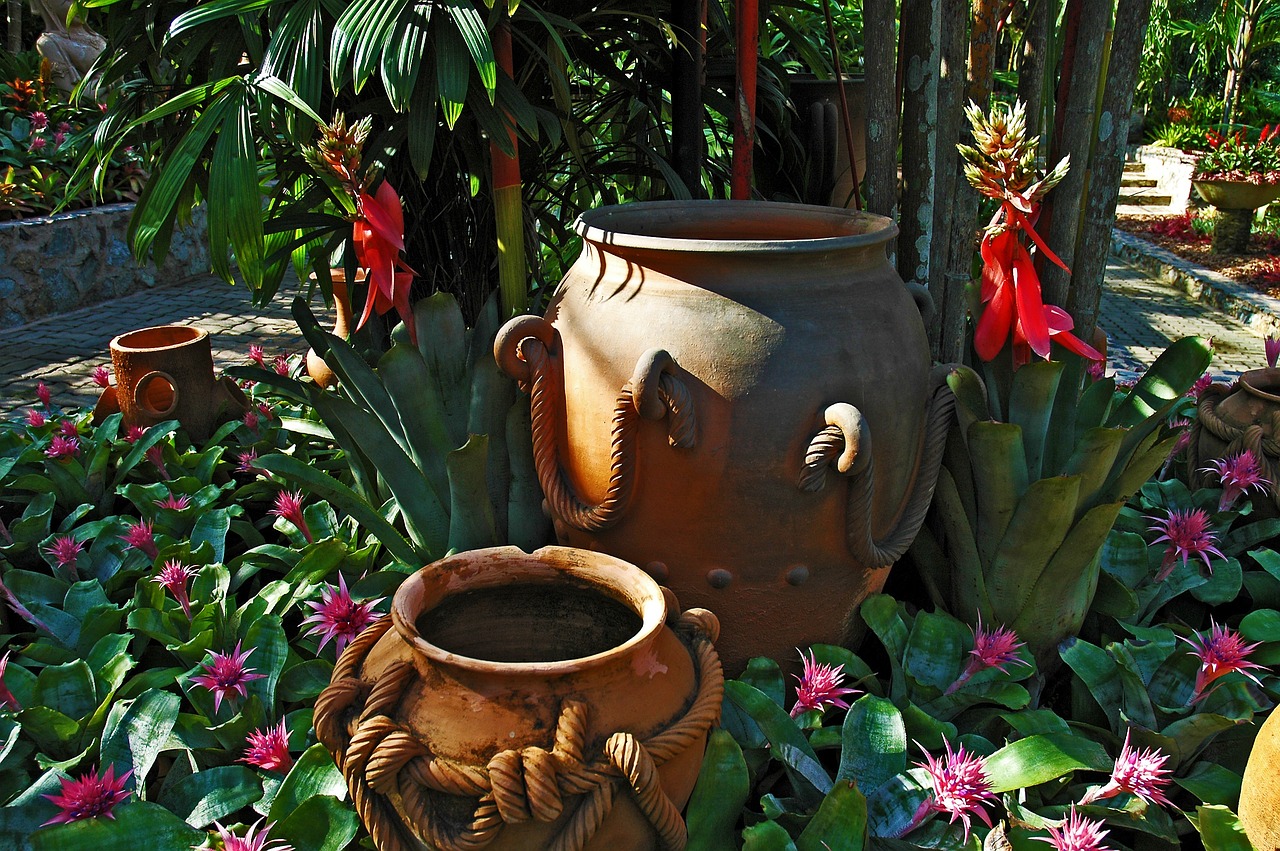
Physical Properties
When diving into the world of ceramics, understanding the of clay is like unlocking a treasure chest of creativity and functionality. These properties are not just technicalities; they are the building blocks that define how clay behaves during the shaping, drying, and firing processes. Among the most critical physical properties are texture, plasticity, and shrinkage. Each of these factors plays a significant role in determining the success of a ceramic piece, whether it’s a delicate porcelain vase or a robust stoneware pot.
The texture of clay can range from smooth to gritty, influencing how it feels in the hands of the artist and how it interacts with tools. A finer texture often allows for more detailed work, while a coarser texture can add character and depth to the finished product. This tactile experience is crucial for potters, as it affects not only the crafting process but also the final aesthetic of the piece.
Next up is plasticity, which refers to the clay's ability to be molded and shaped without cracking. Imagine trying to sculpt a masterpiece out of a material that crumbles under pressure—frustrating, right? That’s why understanding plasticity is vital for anyone looking to create beautiful ceramic art. A clay with high plasticity can be easily manipulated, allowing for intricate designs and forms. On the flip side, low plasticity can lead to cracks and breaks, making it a poor choice for detailed work.
Several factors come into play when it comes to the plasticity of clay. The most significant among them are:
- Water Content: The amount of water mixed with clay directly impacts its plasticity. Too little water can make the clay stiff and unworkable, while too much can lead to slumping and loss of shape.
- Mineral Composition: Different minerals contribute to the plasticity of clay. For instance, clays rich in kaolinite tend to be more plastic than those with higher levels of quartz.
- Particle Size: Finer particles generally enhance plasticity, allowing for smoother and more flexible manipulation.
To ensure that the clay selected for a project meets the necessary plasticity requirements, potters often conduct tests. One common method is the wedge test, where a small piece of clay is kneaded and then shaped into a form. If the clay holds its shape without cracking, it’s deemed suitable for use. This simple yet effective test can save artists a lot of heartache by ensuring they choose the right material for their creative endeavors.
Another essential physical property is shrinkage, which occurs during both the drying and firing processes. As clay loses moisture, it naturally contracts, and understanding this shrinkage rate is crucial for potters. If they don’t account for shrinkage, the final piece may not match the intended dimensions, leading to disappointment and wasted effort. Knowing the shrinkage characteristics of a particular clay can help artists design pieces that maintain their original size and shape, ensuring that their vision comes to life accurately.
In summary, the physical properties of clay are foundational to the art of ceramics. By mastering the nuances of texture, plasticity, and shrinkage, potters can enhance their craftsmanship and create stunning, functional pieces that stand the test of time.
Q: What is the best type of clay for beginners?
A: Earthenware clay is often recommended for beginners due to its forgiving nature and ease of use.
Q: How can I improve the plasticity of my clay?
A: Adding water and kneading the clay thoroughly can help increase its plasticity. You can also experiment with different clay bodies that have higher plasticity.
Q: Why is understanding shrinkage important?
A: Knowing the shrinkage rate helps potters design pieces that maintain their intended dimensions, preventing issues during the firing process.
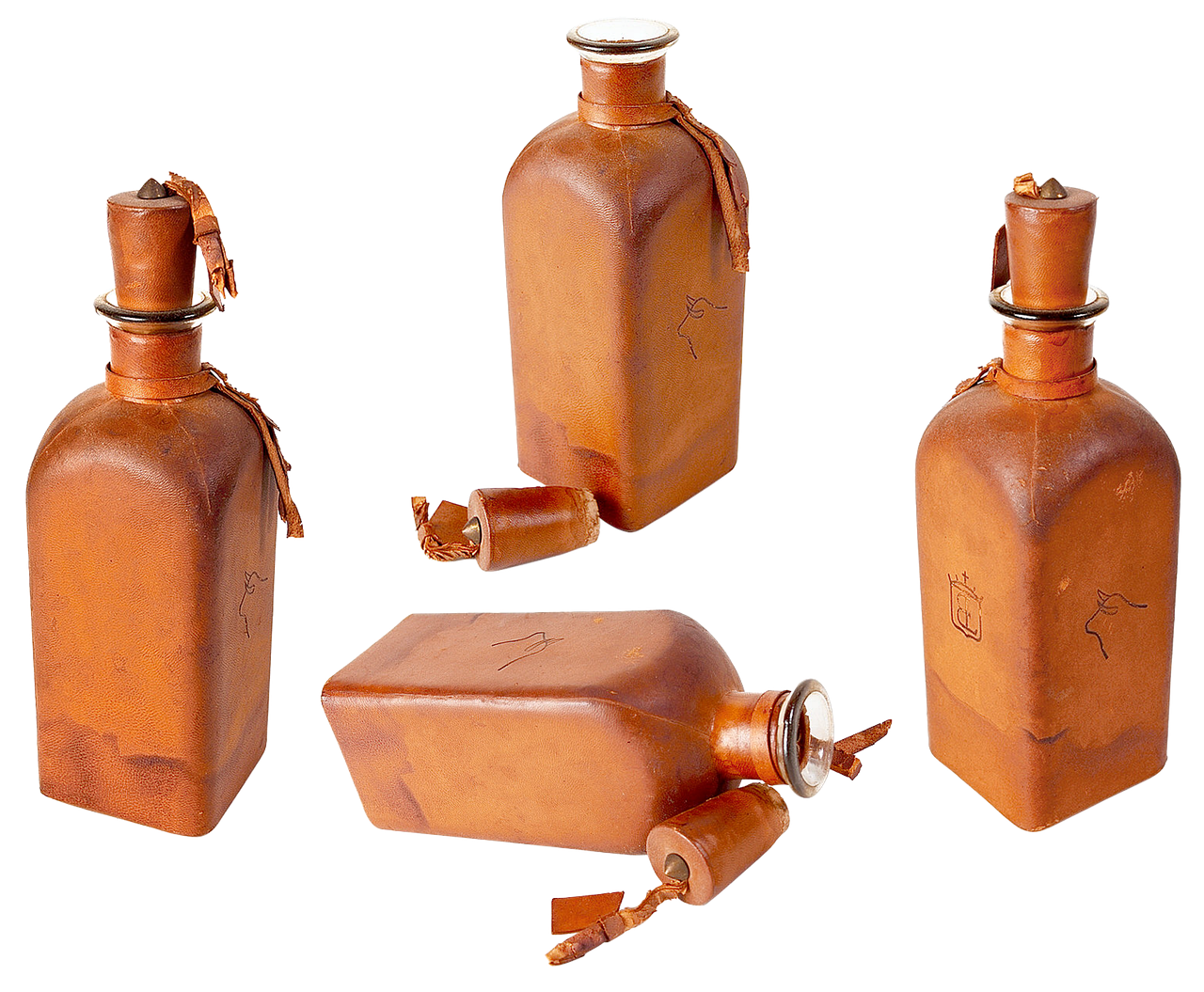
Plasticity
Plasticity is one of the most fascinating properties of clay, and it plays a pivotal role in the world of ceramics. When we talk about plasticity, we're referring to the ability of clay to be molded and shaped without cracking or breaking. Imagine sculpting a piece of clay into a beautiful vase or a detailed figurine; the ease with which you can manipulate the clay is largely due to its plasticity. This property is essential for potters and ceramic artists, as it allows them to create intricate designs and forms that would otherwise be impossible with less plastic materials.
The plasticity of clay is influenced by several key factors, including its water content and mineral composition. For instance, a clay that is too dry can become crumbly and difficult to shape, while one that is overly wet may be too soft and lose its form. Potters often experiment with the moisture levels to find the perfect balance for their specific projects. Additionally, the mineral content plays a significant role; clays rich in certain minerals, like kaolinite, tend to exhibit higher plasticity, making them ideal for detailed work.
Understanding plasticity is not just about knowing how to mold the clay; it's also about testing and assessing this property before starting a project. Various methods can be employed to evaluate plasticity, with one of the most common being the wedge test. In this test, a small piece of clay is wedged and then stretched to see how far it can be manipulated before it cracks. This simple yet effective method helps artists determine if a particular clay is suitable for their needs. The results of such tests can guide potters in their selection process, ensuring they choose the right material that meets their artistic vision.
In summary, plasticity is a crucial aspect of clay that significantly impacts the ceramic creation process. By understanding and testing this property, artists can enhance their skills and create stunning pieces that showcase the beauty and versatility of clay. Whether you are a seasoned potter or just starting out, grasping the concept of plasticity will undoubtedly elevate your ceramic work to new heights.
- What is plasticity in clay?
Plasticity refers to the ability of clay to be shaped and molded without cracking, making it essential for ceramic work. - How does water content affect plasticity?
The right amount of water in clay enhances its plasticity, while too much or too little can hinder its workability. - What is the wedge test?
The wedge test is a method used to assess the plasticity of clay by stretching it to see how far it can be manipulated before cracking. - Why is plasticity important for potters?
Plasticity allows potters to create intricate designs and shapes, crucial for both artistic and functional ceramics.

Factors Affecting Plasticity
When it comes to working with clay, understanding the factors that affect its plasticity is crucial for any ceramic artist or potter. Plasticity allows clay to be molded and shaped without cracking, which is essential for creating both functional and artistic pieces. So, what influences this vital property? Let's dive into the key factors that play a significant role in determining the plasticity of clay.
First and foremost, the water content in the clay is a major player. Water acts as a lubricant, allowing the tiny particles of clay to slide past each other, which enhances its ability to be shaped. However, too much water can lead to a soupy consistency that is difficult to work with, while too little can make the clay dry and crumbly. Finding the right balance is essential for optimal plasticity.
Next up is the mineral composition of the clay itself. Different types of clays contain varying minerals, such as kaolinite, illite, and montmorillonite. Each of these minerals contributes to the clay's overall behavior when wet. For instance, montmorillonite is known for its high plasticity due to its layered structure, which allows it to absorb water easily. In contrast, kaolinite has lower plasticity, making it less suitable for intricate shaping but excellent for fine porcelain.
Another factor to consider is the particle size of the clay. Finer particles tend to enhance plasticity because they create a denser, more cohesive mass when wet. On the other hand, coarser clays may not hold together as well and can be more challenging to work with. The distribution of particle sizes also plays a role; a mix of fine and coarse particles can create a clay body that balances strength and workability.
Lastly, the temperature at which the clay is processed can influence its plasticity. When clay is fired at higher temperatures, it can undergo changes that affect its plastic properties. For example, some clays may become less plastic after firing due to the vitrification process, which can lead to a more rigid and less malleable structure.
In summary, the plasticity of clay is influenced by a combination of factors, including:
- Water Content
- Mineral Composition
- Particle Size
- Temperature
Understanding these elements not only helps potters select the right clay for their projects but also enhances their ability to manipulate the material effectively. By mastering the factors affecting plasticity, artists can unlock the full potential of their clay, leading to stunning and functional ceramic creations.
- What is plasticity in clay? Plasticity refers to the ability of clay to be molded and shaped without cracking, making it essential for ceramic work.
- How does water content affect clay? Water content acts as a lubricant, allowing clay particles to move past each other, enhancing plasticity. However, too much or too little water can hinder workability.
- What minerals contribute to clay plasticity? Minerals like montmorillonite increase plasticity, while kaolinite has lower plasticity but is great for fine porcelain.
- Does firing temperature affect plasticity? Yes, firing temperature can change the plastic properties of clay, often making it less malleable after the vitrification process.
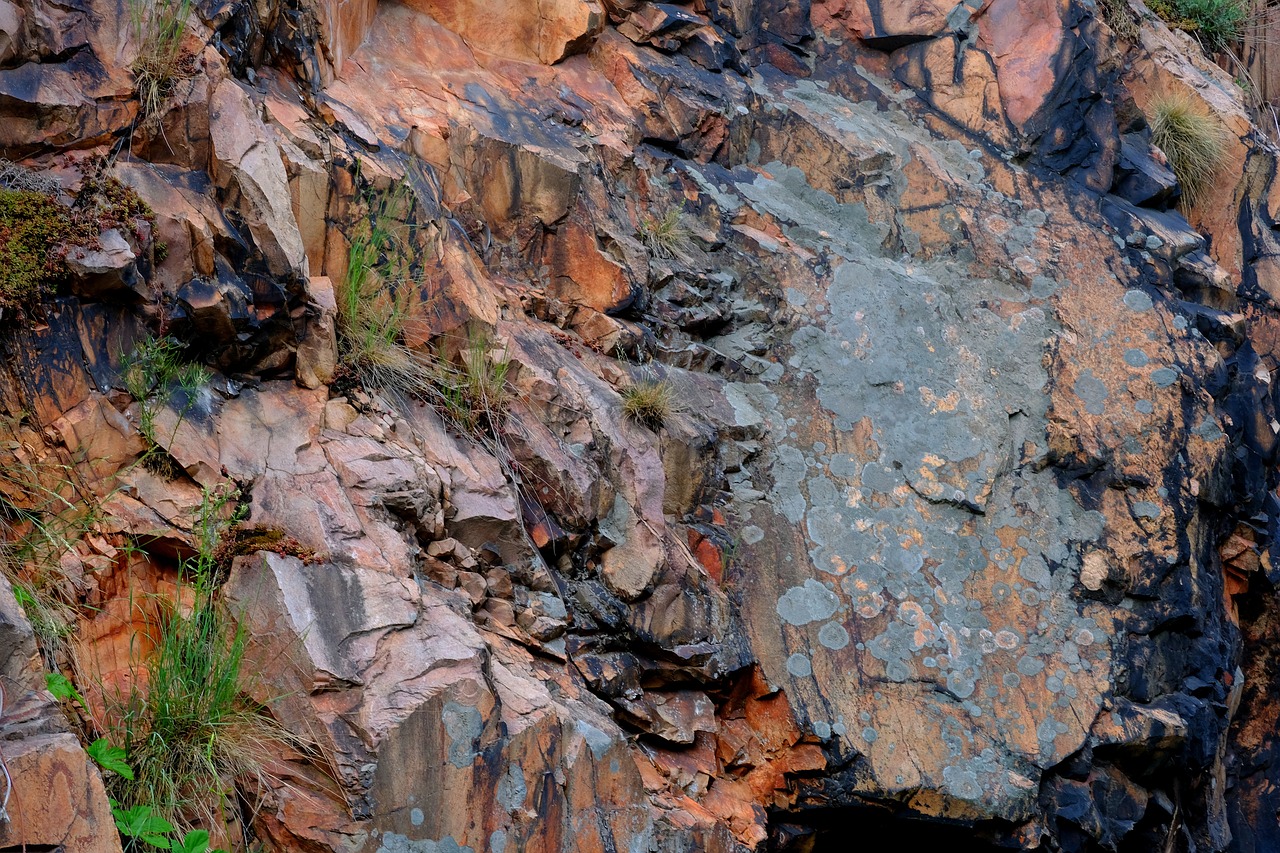
Testing Plasticity
Testing the plasticity of clay is an essential step for potters and ceramic artists to ensure that they are working with a material that can be shaped and molded effectively. Plasticity, as you might recall, refers to the ability of the clay to be molded without cracking or losing its form. This property can significantly influence the success of a ceramic piece, from functional pottery to intricate sculptures. So, how do artists determine if a clay's plasticity is up to par?
One of the most common methods for testing plasticity is the wedge test. This straightforward technique involves taking a sample of clay and wedging it, which means kneading it to remove air pockets and ensure an even consistency. Once the clay is properly wedged, the artist can then shape it into a small cylinder or a coil. After forming, the clay is gently twisted or bent to see how well it holds its shape. If it cracks or breaks, it indicates low plasticity, while a smooth bend without any damage suggests the clay has good plasticity.
Another effective method is the roll test. In this process, the artist rolls a piece of clay into a thin coil and then attempts to bend it into a circle. If the coil can bend without cracking, it demonstrates that the clay possesses adequate plasticity. However, if it breaks or crumbles, it reveals that the clay may not be suitable for the intended project.
In addition to these hands-on tests, there are also scientific methods for assessing plasticity. For instance, some laboratories conduct viscometric tests to measure the flow properties of clay when water is added, providing a more quantitative assessment of plasticity. These tests can be particularly useful for large-scale production where consistency is key.
Ultimately, understanding how to test plasticity allows artists to make informed decisions about the clay they use, ensuring that their creations will not only look beautiful but also stand the test of time. By selecting the right clay with the appropriate plasticity, potters can achieve their desired results, whether that be a delicate porcelain vase or a robust stoneware jug.
- What is plasticity in clay? Plasticity refers to the ability of clay to be shaped and molded without cracking.
- How can I test the plasticity of my clay? You can test plasticity using methods like the wedge test or roll test.
- Why is plasticity important for ceramics? Plasticity is crucial because it affects how well the clay can be shaped and whether it will hold its form during the drying and firing processes.
- Can plasticity change over time? Yes, factors like moisture content and exposure to air can affect the plasticity of clay.
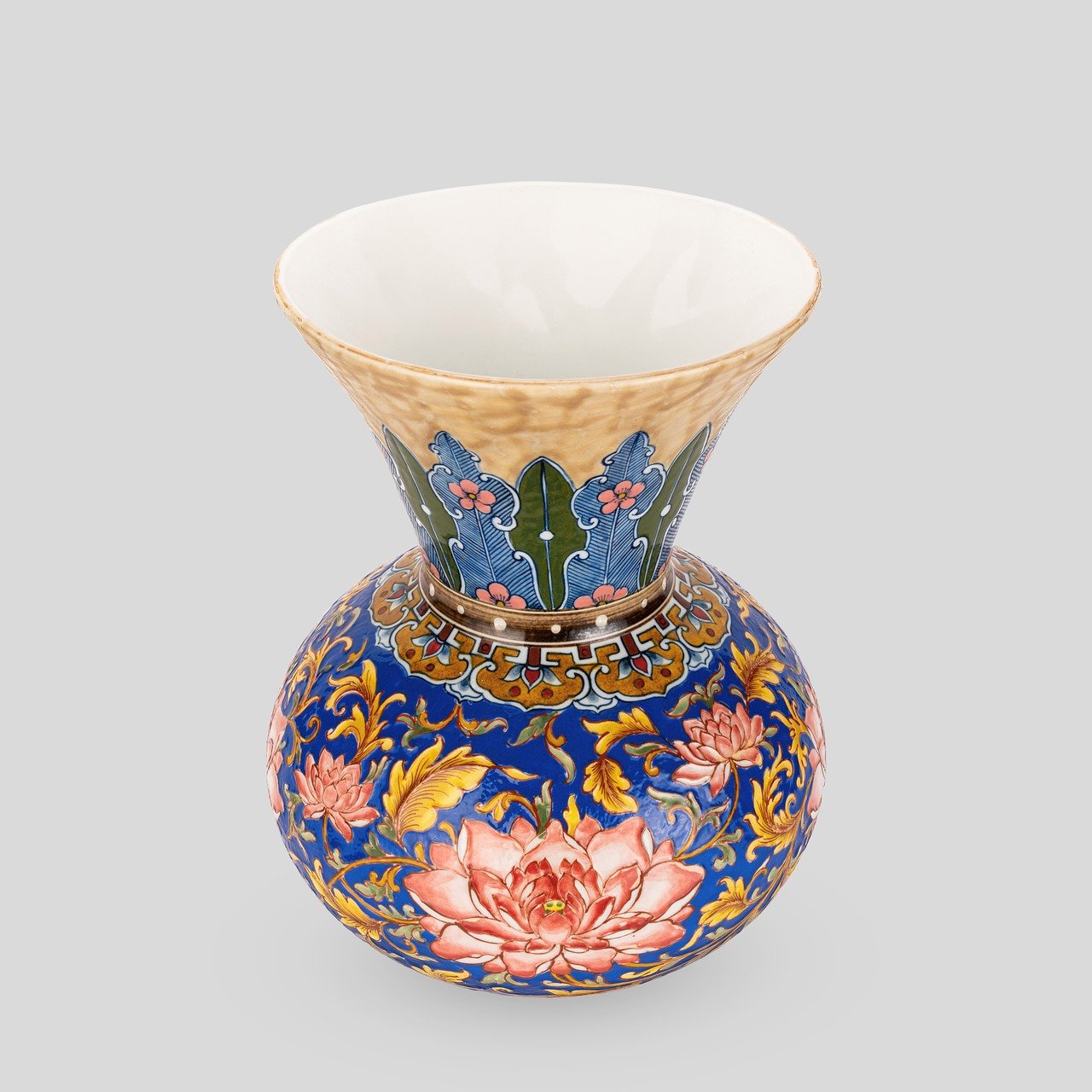
Shrinkage
Shrinkage is an inevitable phenomenon that every potter must grapple with during the creation of ceramic pieces. It occurs during both the drying and firing processes, and understanding this behavior is essential for producing high-quality ceramics. Imagine crafting a beautiful vase only to find that it has shrunk to half its intended size after firing; this is the nightmare scenario every ceramic artist wishes to avoid. The shrinkage rate can vary significantly based on the type of clay used, the moisture content, and the firing temperature.
When clay is initially shaped, it contains a certain amount of water. As the clay dries, this moisture evaporates, causing the clay to contract. This initial drying shrinkage can be quite substantial, often ranging from 5% to 10% of the original size, depending on the specific clay body. Following the drying process, the piece is then fired in a kiln. During firing, further shrinkage occurs as the clay particles fuse together and lose additional moisture, leading to what is known as firing shrinkage.
To give you a clearer picture, here’s a quick breakdown of the different stages of shrinkage:
| Stage | Type of Shrinkage | Percentage of Shrinkage |
|---|---|---|
| Drying | Initial Shrinkage | 5% - 10% |
| Firing | Firing Shrinkage | 1% - 5% |
It's crucial for potters to account for these shrinkage rates when designing their pieces. If they don't, they might end up with a final product that is too small or not the intended shape. To mitigate the risks associated with shrinkage, artists often create test pieces to measure the shrinkage rate of their specific clay body. This practice allows them to adjust their designs accordingly before committing to larger works.
Moreover, the choice of clay can significantly influence shrinkage. For instance, earthenware typically shrinks more than stoneware or porcelain. Understanding these nuances can help potters select the right clay for their projects and achieve the desired results. In essence, shrinkage is not just a technical challenge; it's an integral part of the creative process that requires careful planning and consideration.
- What causes shrinkage in clay? Shrinkage in clay is primarily caused by the loss of moisture during the drying and firing processes.
- How can I minimize shrinkage? You can minimize shrinkage by carefully controlling the moisture content and selecting a clay body known for lower shrinkage rates.
- Does all clay shrink the same amount? No, different types of clay have varying shrinkage rates, so it’s essential to test your specific clay.
- What is the average shrinkage rate for ceramics? The average shrinkage rate can range from 5% to 15%, depending on the clay type and firing conditions.
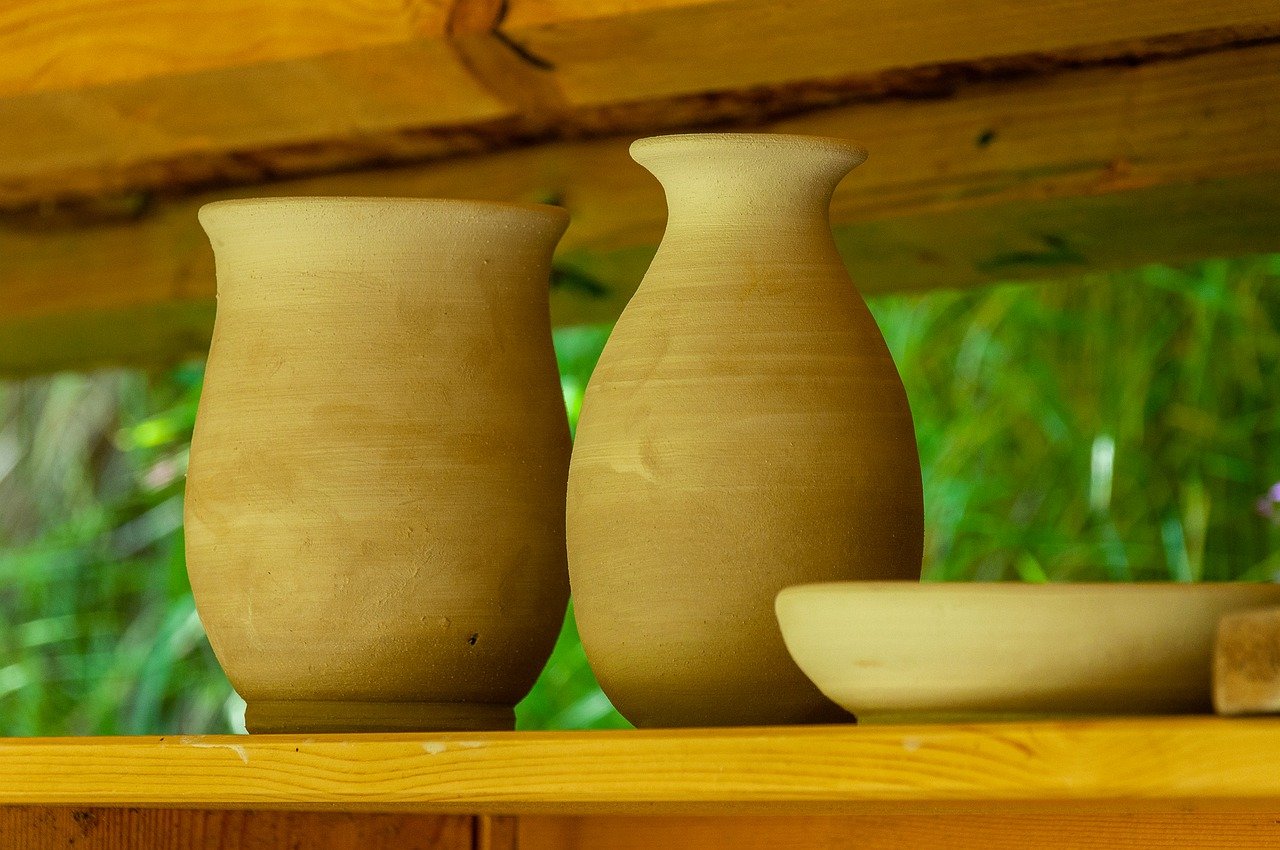
Chemical Composition
The of clay is a fundamental aspect that significantly influences its performance in ceramics. Understanding this composition is like knowing the secret recipe behind a delicious dish; it determines not only the taste but also the texture, appearance, and durability of the final product. Clays are primarily composed of various minerals, water, and organic materials, and each component plays a crucial role in how the clay behaves during the pottery-making process.
At the heart of clay's chemical composition are the minerals that give it unique properties. For instance, kaolinite, a common mineral found in clay, is known for its excellent plasticity and ability to withstand high firing temperatures. On the other hand, illite, which is more common in earthenware clays, offers different characteristics that can affect the final product's strength and color. This variation in mineral content is what makes different types of clay suitable for various applications.
Moreover, the firing temperature is another critical factor influenced by the clay's chemical makeup. When clay is subjected to heat, it undergoes a process called vitrification, where it transforms into a glass-like state. This process is essential for enhancing the clay's strength and durability. Different clay types require different firing temperatures, which can range anywhere from 1,000°C to 1,400°C, depending on their mineral content. Understanding the specific firing temperature for a given clay type is crucial for potters, as firing at the wrong temperature can lead to disastrous results, such as cracking or warping.
To illustrate the relationship between mineral content and firing temperature, consider the following table:
| Clay Type | Main Mineral | Typical Firing Temperature (°C) |
|---|---|---|
| Earthenware | Illite | 1,000 - 1,150 |
| Stoneware | Kaolinite & Feldspar | 1,200 - 1,300 |
| Porcelain | Kaolinite | 1,300 - 1,400 |
In addition to these minerals, the presence of organic materials can also affect the clay's properties. Organic matter can enhance the workability of clay, making it easier to mold and shape. However, too much organic material can lead to issues during firing, as it can burn out and create unwanted voids in the ceramic piece. Thus, achieving the right balance in chemical composition is essential for successful ceramic creation.
In summary, the of clay is a complex interplay of various minerals and organic materials that dictate how the clay behaves under different conditions. By understanding these components, potters can make informed decisions about the types of clay they choose for their projects, ensuring that the final products are not only beautiful but also functional and durable.
- What minerals are commonly found in clay?
The most common minerals in clay include kaolinite, illite, and montmorillonite, each contributing different properties to the clay.
- How does firing temperature affect clay?
The firing temperature influences the clay's vitrification process, affecting its strength, porosity, and overall durability.
- Can I mix different types of clay?
Yes, mixing different clays can create unique properties, but it’s essential to ensure they have compatible firing temperatures and shrinkage rates.
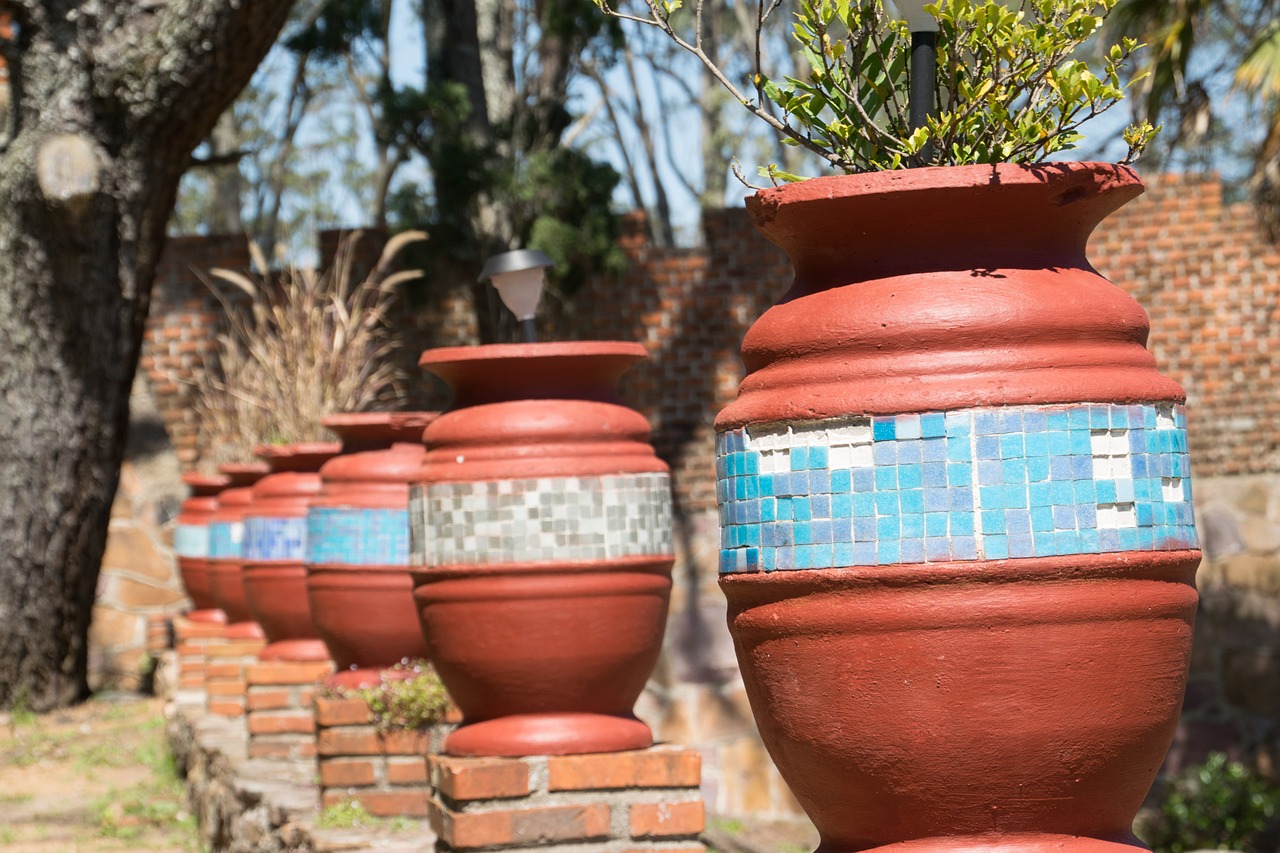
Mineral Content
The of clay is one of the most significant factors that determine its properties and suitability for various ceramic applications. Different clays contain varying amounts of minerals, which can drastically affect the final product's appearance, strength, and functionality. For instance, kaolinite, a primary mineral found in porcelain clays, provides a fine texture and allows for a smooth finish, making it ideal for high-quality dinnerware and fine china. On the other hand, illite and montmorillonite contribute to the plasticity of earthenware clays, allowing them to be easily shaped and molded.
Understanding the mineral composition is essential for potters and ceramic artists. The presence of certain minerals not only influences the color of the clay after firing but also affects its durability and resistance to thermal shock. For example, iron oxide can give a reddish hue to stoneware while also enhancing its strength. Conversely, too much iron can lead to issues during the firing process, such as warping or cracking.
When selecting clay for a specific project, it's crucial to consider the mineral content as it directly correlates with the desired outcome. Here’s a brief overview of some common minerals found in clays and their effects:
| Mineral | Effect on Clay |
|---|---|
| Kaolinite | Provides smooth texture and high whiteness; ideal for porcelain. |
| Illite | Enhances plasticity; commonly found in stoneware. |
| Montmorillonite | Increases plasticity and water retention; useful for earthenware. |
| Iron Oxide | Impacts color and strength; can cause warping if present in excess. |
Moreover, the interaction between these minerals during the firing process can lead to unique textures and finishes that are highly sought after in the ceramics community. The right balance of minerals can transform a simple piece of clay into a stunning work of art or a functional item that stands the test of time. Therefore, understanding the mineral content is not just about knowing what’s in the clay; it's about mastering the craft of ceramics.
- What is the most common mineral in clay?
Kaolinite is one of the most common minerals found in clay, especially in porcelain.
- How does mineral content affect the firing temperature of clay?
The mineral composition can significantly impact the firing temperature; different minerals have different vitrification points.
- Can I mix different types of clay?
Yes, mixing clays can create unique properties, but it's important to understand how the mineral content will interact.
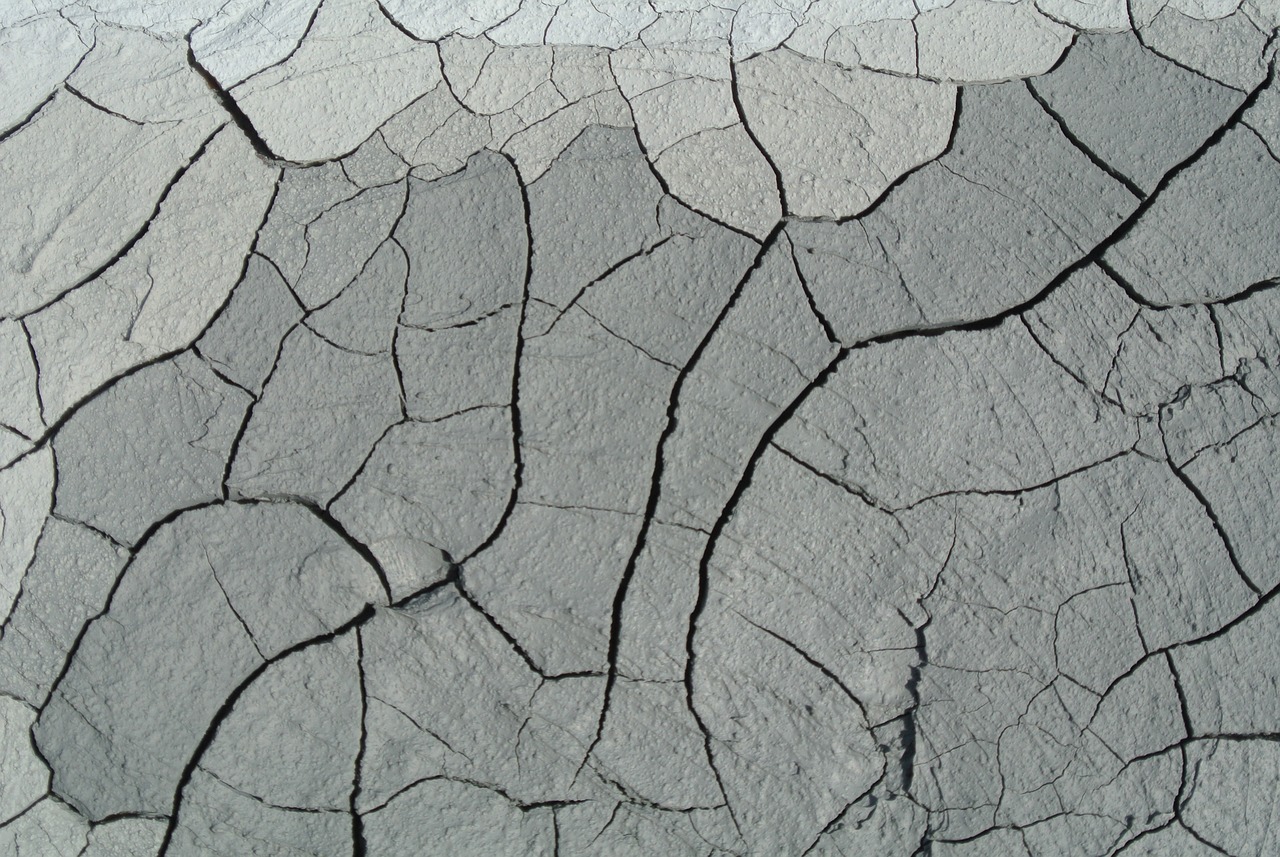
Firing Temperature
The of clay is one of the most critical factors influencing the final properties of ceramic products. When clay is subjected to heat during the firing process, it undergoes a transformation that can significantly affect its strength, durability, and overall appearance. Understanding the right firing temperature is essential for potters and ceramic artists to achieve the desired results in their creations.
Generally, clays can be categorized based on their firing temperatures, which can range from low to high. For instance, earthenware typically fires at lower temperatures, around 1,800°F to 2,000°F (982°C to 1,093°C). This type of clay is porous and often requires a glaze to make it waterproof. On the other hand, stoneware is fired at higher temperatures, usually between 2,200°F and 2,400°F (1,204°C to 1,316°C), resulting in a denser and more durable product. Lastly, porcelain is known for its high firing temperatures, often exceeding 2,400°F (1,316°C), which contributes to its exquisite translucency and strength.
To illustrate how firing temperature impacts the clay, consider the following table:
| Type of Clay | Firing Temperature (°F) | Characteristics |
|---|---|---|
| Earthenware | 1,800 - 2,000 | Porous, requires glazing |
| Stoneware | 2,200 - 2,400 | Dense, strong, often used for functional ware |
| Porcelain | 2,400+ | Translucent, very strong, often used for fine art and dinnerware |
Moreover, the firing temperature also influences the vitrification process, where clay particles begin to melt and fuse together. This transformation is crucial as it leads to the formation of a glassy phase that enhances the clay's mechanical properties. If the firing temperature is too low, the clay may not vitrify adequately, resulting in a weak and fragile product. Conversely, firing at excessively high temperatures can lead to deformation or even melting of the piece, which is something every potter dreads!
In addition to temperature, the atmosphere in the kiln during firing can also impact the final product. A reduction atmosphere, where there is less oxygen, can alter the color and surface finish of the clay, creating unique effects that can be desirable in certain artistic applications. Understanding these nuances allows artists to push the boundaries of their creativity while ensuring the integrity of their work.
Ultimately, mastering the firing temperature is akin to a chef perfecting a recipe; it requires practice, experimentation, and a keen understanding of the materials at hand. By paying attention to the firing temperature and its effects, potters can create stunning pieces that not only serve a functional purpose but also stand as works of art.
- What happens if I fire clay at the wrong temperature?
Firing clay at the incorrect temperature can lead to various issues, including under-vitrification, which makes the piece weak, or over-vitrification, which can cause warping or melting. - Can I fire different types of clay together?
It's generally not recommended to fire different types of clay together unless they have similar firing temperatures, as they may react differently to heat. - How can I determine the right firing temperature for my clay?
It's essential to refer to the manufacturer's specifications for your specific clay type, as well as conduct tests to find the ideal temperature for your projects.
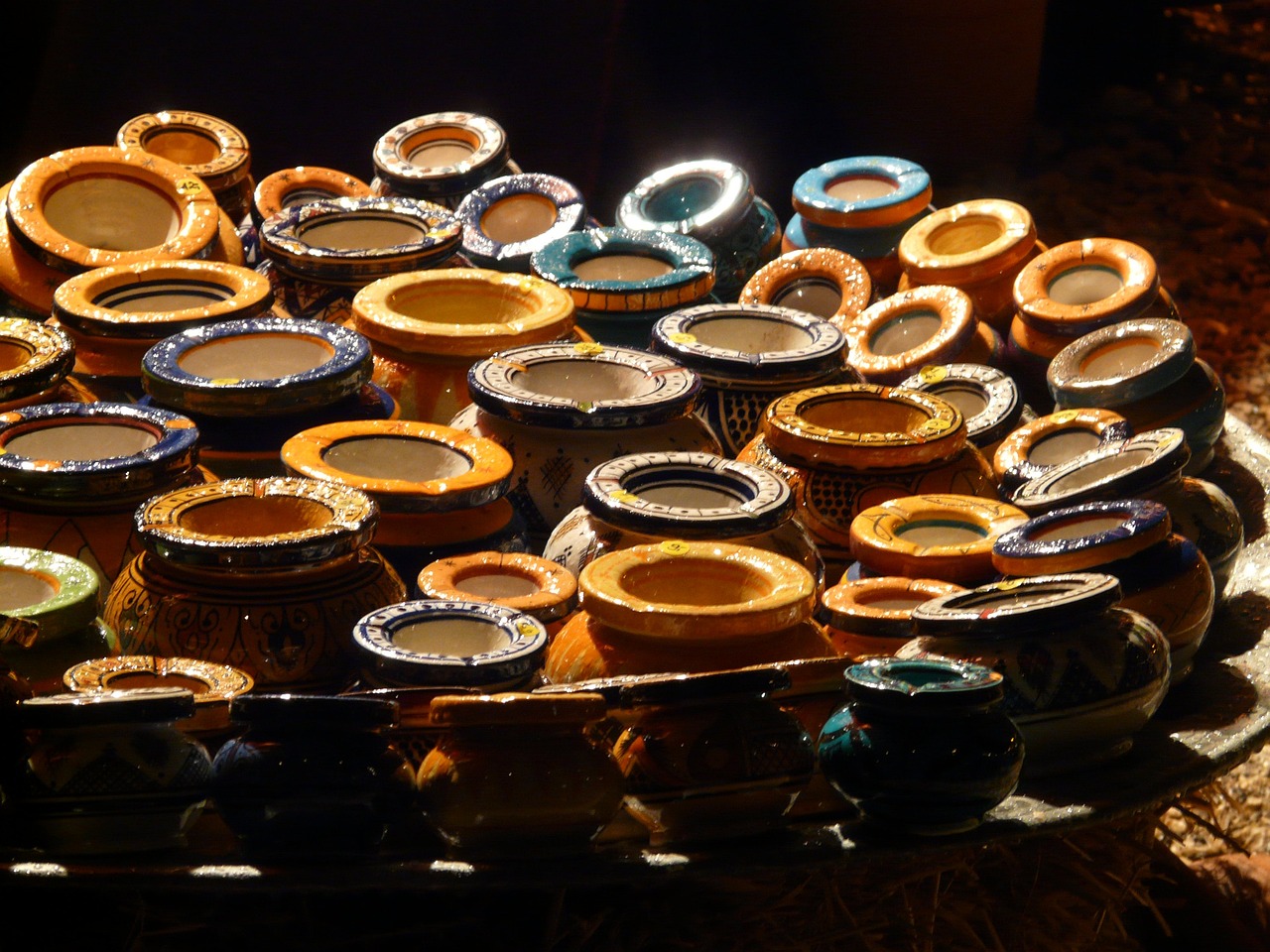
Applications of Clays in Ceramics
When it comes to the world of ceramics, clay is the unsung hero. Its versatility opens up a treasure trove of applications, ranging from everyday functional pottery to stunning artistic sculptures. Each application demands specific properties of clay, ensuring that the final product not only looks good but also performs well. For instance, earthenware, known for its porous nature, is often used for decorative pieces and flower pots, while stoneware is favored for its durability and is commonly used in dinnerware. On the other hand, porcelain shines in fine china and intricate sculptures due to its translucency and strength.
In the realm of functional pottery, the choice of clay can significantly affect the usability and aesthetics of the final piece. For example, stoneware is often used for oven-safe dishes because it can withstand high temperatures without cracking. Its high firing temperature leads to a non-porous finish, making it ideal for serving food. Meanwhile, earthenware is perfect for decorative items and is often left unglazed to showcase its natural beauty, although it is not suitable for food use due to its porous nature.
On the artistic side, clay opens doors to creativity. Artists can manipulate various types of clay to create stunning sculptures, tiles, and even intricate jewelry. The choice of clay affects not only the final appearance but also the durability of the piece. For example, a sculptor might choose porcelain for its fine detail and smooth finish, while a ceramic artist might prefer stoneware for its sturdiness and ability to hold vibrant glazes.
Another exciting application of clays in ceramics is in the field of ceramic engineering. Here, specialized clays are formulated for high-performance applications, such as in the production of electrical insulators or components in the aerospace industry. These clays are engineered to withstand extreme conditions, showcasing just how diverse the applications of clay can be.
Moreover, the rise of eco-friendly practices has led to an increased interest in sustainable ceramics. Artists and manufacturers are exploring natural clays and organic glazes, creating pieces that are not only beautiful but also environmentally friendly. This shift not only respects nature but also adds a unique story to each piece, making it more valuable to consumers who are increasingly conscious of their environmental impact.
In summary, the applications of clays in ceramics are as varied as the types of clay available. From functional ware that graces our tables to artistic masterpieces that adorn our homes, the right clay can elevate any creation. Understanding these applications allows artists and potters to make informed choices, ensuring that their work not only meets aesthetic expectations but also performs as intended.
- What types of clay are best for beginners? Earthenware is often recommended for beginners due to its forgiving nature and lower firing temperatures.
- Can I use any clay for functional pottery? Not all clays are suitable for functional pottery. Stoneware and porcelain are typically preferred for their durability and non-porous qualities.
- How do I choose the right clay for my project? Consider the final use of your piece, the firing temperature, and the desired finish. Each type of clay has unique properties that dictate its suitability for various applications.
Frequently Asked Questions
- What are the main types of clays used in ceramics?
There are three primary types of clays used in ceramics: earthenware, stoneware, and porcelain. Each type has its own unique characteristics that make it suitable for different applications. Earthenware is often more porous and lower firing, while stoneware is known for its durability and versatility. Porcelain, on the other hand, is prized for its fine texture and translucency, making it ideal for high-quality art pieces and tableware.
- How does plasticity affect clay work?
Plasticity is essential in the world of ceramics because it determines how well clay can be shaped and molded without cracking. A clay's plasticity is influenced by its water content and mineral composition. High plasticity means you can create intricate designs and forms, while low plasticity can make it challenging to work with. Understanding this property is crucial for potters and ceramic artists to achieve their desired results.
- What factors influence the shrinkage of clay?
Shrinkage in clay occurs during the drying and firing processes, and several factors can affect this. The water content in the clay, the type of clay used, and the firing temperature all play significant roles. Knowing the shrinkage rate helps potters design their pieces to maintain the intended dimensions, ensuring that the final product meets their expectations.
- Why is chemical composition important in ceramics?
The chemical composition of clay affects its firing temperature, color, and overall durability. Different minerals within the clay, such as kaolinite and illite, influence the final appearance and strength of the ceramic products. Understanding these aspects is crucial for potters to select the right clay for their specific needs and to achieve the desired outcomes in their work.
- How do firing temperatures affect clay properties?
The firing temperature is critical in the vitrification process of clay, which impacts its hardness and functionality. Higher firing temperatures typically lead to a denser and more durable final product, while lower temperatures may result in a more porous and fragile piece. Potters must carefully consider the firing temperature to ensure their ceramics perform well in their intended applications.
- What are the common applications of clays in ceramics?
Clays are incredibly versatile and find applications in various areas of ceramics. From functional pottery like mugs and plates to artistic sculptures and decorative items, each application requires specific properties for optimal results. Understanding the different types of clays and their characteristics allows artists and potters to create pieces that are both beautiful and functional.


















